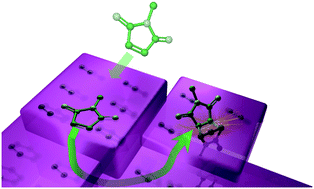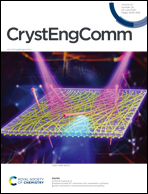Role of surface phenomena in the reaction of molecular solids: the Diels–Alder reaction on pentacene†
Abstract
Reactivity trends for molecular solids cannot be explained exclusively through the topochemical phenomenon (i.e. diffusivity, reaction cavities) or electronic structure of the molecules. As an example of this class, Diels–Alder reactions of small molecules with pentacene thin films are examined to elucidate the importance of surface phenomena to reactivity. Polarization modulation-infrared reflection–absorption spectroscopy (PM-IRRAS) has revealed that vapors from the small molecules condense on the surface, in a non-covalent manner, to form a coating 2–3 molecules thick. The phase of this layer can provide increased surface diffusion (both reactant and product) which rapidly accelerates the reaction rate. Kinetic studies of pentacene thin film reactions demonstrate the importance of this condensed state to trends in reactivity, with layers in a quasi-liquid state showing a rate acceleration of 13–30 times compared to those in a quasi-solid state. Scanning electron microscopy provides further evidence of this phase behavior, while solid-state UV-vis confirms the kinetic results.



 Please wait while we load your content...
Please wait while we load your content...